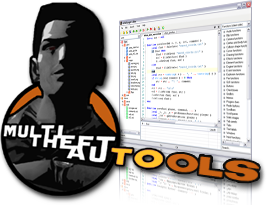Mta Script Editor Download

Zimbra Collaboration Suite ( ZCS) is an Open Source, collaborative platform for email servers, developed in two editions, Open Source edition ( Free) and Network Edition ( Paid), which provides services such as LDAP, SMTP, POP and IMAP, webmail client, calendaring, tasks, antivirus, antispam and others. This tutorial describes how to install Zimbra Collaboration Suite Open Source Edition on a CentOS/RHEL 7 server. Requirements • An external DNS server with both A and MX valid records to point to your Zimbra mail server IP Address. • A clean without any mail,databases, LDAP, DNS or http servers up and running. • A static IP Address assigned to network interface. Step 1: Install System Packages 1. Before we proceed with Zimbra Collaboration Suite installation process, first login to your server console with root privileges and install the following packages: # yum -y install unzip net-tools sysstat openssh-clients perl-core libaio nmap-ncat libstdc++.so.6.
MTA SA map, script, shader, etc editor. Contribute to CodyJL/mta-edit development by creating an account on GitHub. Clone or download.
Fig 02: Disable SELinux in CentOS 7 To completely disable Selinux on CentOS, open /etc/selinux/config file with a text editor and set the line SELINUX to disabled. Assure that is also installed on your system by issuing the following command: # yum install wget Step 2: Configure System Hostname 4. In order for Zimbra to function correctly you must set the local machine hostname and FQDN to point to your server IP Address by running the below commands from root account: # hostnamectl set-hostname mail # echo '192.168.0.14 mail.centos7.lan mail ' >> /etc/hosts # cat /etc/hosts Replace the system hostname and FQDN values accordingly in order to match your own domain settings.
Hasil Kelulusan CPNS K2 Kemenag – Penantian Honorer K2 Kemenag untuk menjadi CPNS berakhir sudah. Status Honorer segera berubah menjadi CPNS dan berimbas pada pendapatan yang akan diterima nantinya. Pengumuman cpns honorer k2 kemenag 2014.
Test the hostname and FQDN values by issuing the ping command against both records. # ping -c1 mail.centos7.lan # ping -c1 mail. Fig 03: Set System Hostname Step 3: Add a Static IP Address 5. If your server uses a DHCP dynamic IP Address, then you need to edit your network interface card and configure to use a static IP Address.
Get the network interfaces information using ip addr command and identify your server external NIC (usually something like enp0s3 or eth0). # ip addr Then, run the nmtui-edit command against the interface you need to change settings and assign the interface with a manual IP Address. Use the below screenshots as a guide. # nmtui-edit enp0s3. Fig 06: Disable and Remove Postfix After the service has been removed issue the ss command in order to check if other daemons incompatible with Zimbra service, such as LDAP, httpd, dovecot are running on your system. If that’s the case remove them as well.
Best quality, of course, when printing on thermal transfer. One of the best sellers, most used cash register FR-Elwes. Although you can print on struynike and laser, with the ability to output to the fax paper. Shrift kassovogo apparata. In other cases, the print quality is slightly lower.
Step 5: Install Zimbra Collaboration Suite Open Source Edition 7. Now it’s time to install Zimbra Collaboration Suite.

Go to and grab the latest version on your system by issuing the following command: ----------------- For RHEL/CentOS 7 ----------------- # wget ----------------- For RHEL/CentOS 6 ----------------- # wget https://files.zimbra.com/downloads/8.6.0_GA/zcs-8.6.0_GA_1153.RHEL6_5151155.tgz. Fig 07: Download Zimbra Collaboration Suite 8. After the download completes, use unzip command to extract the archive, enter zimbra extracted directory and list the directory content to locate the installer file. # tar xfz zcs-8.6.0_GA_1153.RHEL7_5151110.tgz # cd zcs-8.6.0_GA_1153.RHEL7_5151110 # ls 9. Now, start Zimbra installation process by launching in execution the installer script file named install.sh. After a series of system checks the installer will prompt you to accept the license.